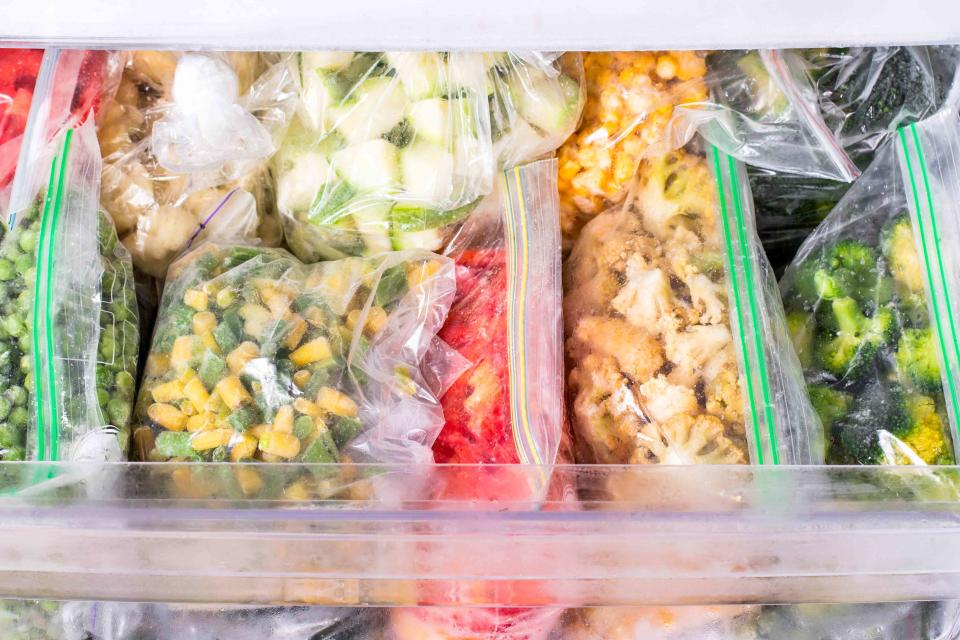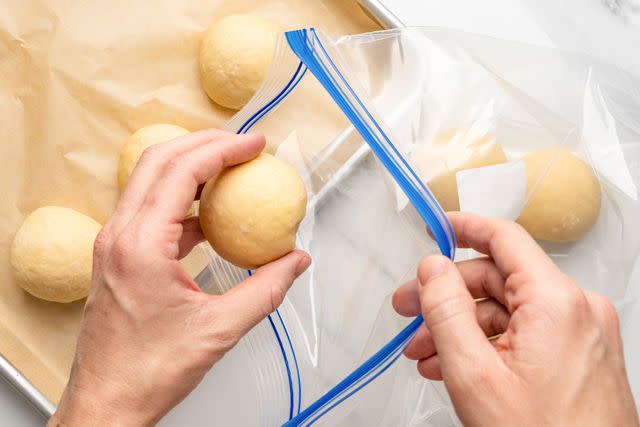Is It Safe To Reuse Zip-Top Bags? Here's What the Experts Say
It's great that you're reducing food waste by storing leftovers in zip-top bags, but this means you're running through plastic bags. Here's what the experts say about reusing them.

Simply Recipes / Getty Images
If you cook, chances are you find yourself with leftover bits and bobs that need storage—you know, half an onion, lemon wedges, or the remainder of that big block of Parmesan you’ve been working your way through.
In my kitchen, I try to eliminate as much food waste as possible, so I generally won’t toss anything that hasn’t gone bad. Which means I have a freezer full of allium scraps for stock and leftover apple slices for pie. It also means I run through a whole lot of zip-top bags.
While I love the ease of a Ziploc, not to mention the way it keeps food (and non-food items) organized and fresh both in and out of the fridge, I don’t love the fact that I’m reducing food waste by running through plastic bags. So I got to wondering about how I could, if at all, reuse these bags.
I got in touch with the brand Ziploc to ask a few questions about reuse. I also chatted with Martin Bucknavage, an expert in food safety at the Penn State Department of Food Science.
Read More: Freezer vs. Regular Zip-Top Bags: Ziploc Explains the Difference
Can You Safely Reuse Your Ziploc Bags?
In short, yes but with a few limitations.
All Ziploc bags, from snack bags to freezer bags, are safe for reuse. The folks at Ziploc told me it's on account of the “high-quality materials that [the bags] are strong enough to be used again,” reiterating that their bags are reusable several times over.
While Bucknavage says it's best to reuse bags after they’ve held dry items like pretzels or hard candy, the most important determinant when considering whether or not to use them again has to do with what food items were stored in the bags.
The experts at Ziploc recommend avoiding the reuse of bags that have held raw meat, fish, eggs, or potentially allergy-triggering foods. Bucknavage agrees that “getting rid of microbes can be difficult, especially after having stored raw meat and fish products in it.” He says, “Those items are known to carry pathogens.”
He too emphasizes the importance of noting allergens when reusing bags in allergenic homes and recommends being extra cautious with “perishable items that have spoilage microbes like cheese and produce, especially if those items have any amount of deterioration.”

Simply Recipes / Mark Beahm
How To Prep Your Zip-Top Bags for Reuse
If you haven’t had any raw meat, fish, or eggs in the bag and you’re looking to use it again, it should be washed, by hand, with soap and warm water both inside and out.
The key is to make sure your food is safe and bacteria-free when using a zip-top bag for the second or third time around is ensuring the inside of the bag has air dried (inside out) completely before storing any food in it.
What Are the Signs It’s Time To Toss Your Zip-Top Bags
Ziploc says if you see any holes, tears, or punctures in your bag, it’s time to say goodbye. Other signs that your bag is no longer good to reuse include staining or lingering odors after washing and drying, any noticeable stretching, or failure of the seal.
If the bags have held any raw animal products or allergens they should not be reused, and if you’re uncertain, it’s always “better to err on the side of safety,” says Bucknavage.
Read the original article on Simply Recipes.

 Yahoo News
Yahoo News 
